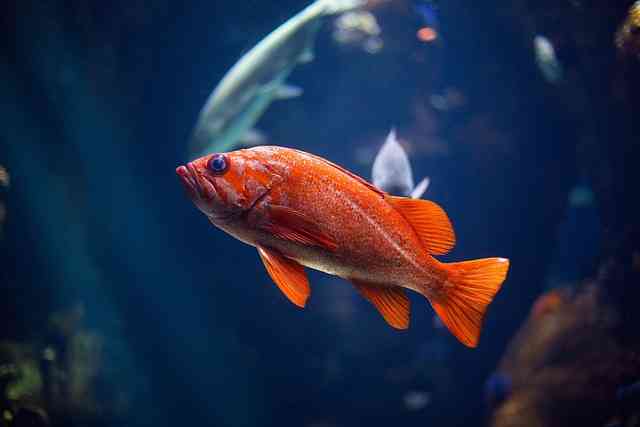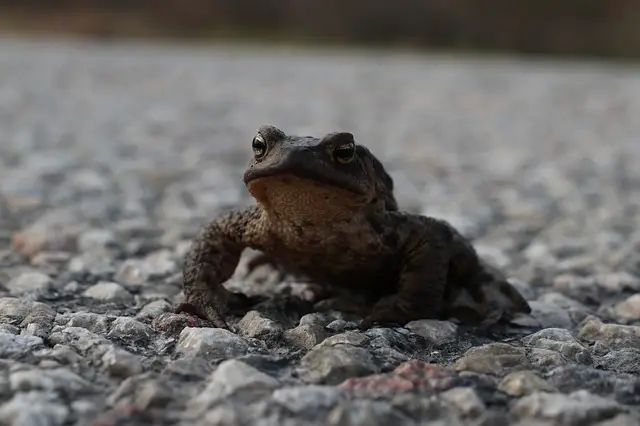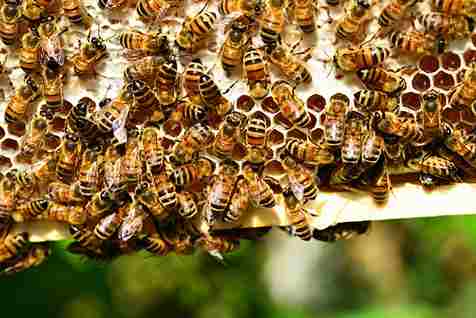Why Are Snails Slow? (8 Facts You Should Know)
Snails are well-known for having soft bodies and spiral-shaped shells but no legs. They belong to the phylum mollusca and class gastropoda, and have two pairs of tentacles on their head with a strong muscular foot. They move by gliding along on their muscular foot which is lubricated by secreting mucus to prevent friction and aid their movement.
If you’ve ever seen a snail in motion before, you will agree that they can be very slow. You may be wondering – why are snails slow? Snails are slow because they have no legs to aid their movement. Instead, they rely on muscular contractions and have to secret a slimy mucus to reduce friction in their track.
Many species of snails are hermaphroditic and have shells that host most of their internal organs. In this article, we will examine locomotion in snails, how they move, what makes them so slow, and how they survive despite being so slow.

How Do Snails Move?
Land or terrestrial snails move by crawling. They do this by making wave-like movements with their muscular foots, which pushes the snail forward. There is a large gland called mucous pedal gland or suprapedal gland located inside the front end of the muscular foot. This gland produces a large amount of mucus or slime which the snail crawls on.
The mucus reduces the friction between the foot of the snail and the ground. This enables the snail to move easily and unharmed. With the mucus, a snail can even move over a razor edge unharmed.
In water, snails are able to swim due to the buoyancy of their shells. This helps them to float. They are also able to balance the surface tension on the water with the viscous drag.
How Slow Do Snails Move?
Snails have to secrete slime before they can move on any surface. They do not have legs. They solely depend on mucus and their muscular foot to move. As a result, snails are quite slow.
Besides lacking actual legs, they have large shells compared to their tiny bodies. The shell makes up 30% of their body weight.
Consequently, they move at a speed less than 8cm per minute. If a snail moves non-stop, it can travel about 4.8 meters per hour.
Why Do Snails Move So Slow?
Snails are considered to be one of the slowest animals. Specifically, they are like the third slowest animals in the world.
But why are snails so slow?
Snails have to secrete slimy mucous before they move. They don’t have legs, so they can’t walk or run like some other animals. After secreting mucus, they have to generate wave-like pulses on their foot which propels them forward.
As earlier indicated, they carry a large shell which accounts for about 30% of their body weight. The weight of the shell tends to slow them down but they can’t live without the shell.
All the factors above contribute to the slow locomotion of snails.
What is slower – a snail or a slug?
A slug moves faster than a snail. An average slug moves at a speed twice that of a snail. A slug moves at a speed of 0.48 kilometers per hour while a snail moves at a speed of 0.048 kilometers per hour. One explanation for this is that snails have to carry the extra weight of their shells, while slugs do not have shells.
Slugs are basically shell-less terrestrial gastropod mollusc. Their bodies are made of mostly water. They are just like snails except that they don’t have a shell. They mostly feed on dead leaves and fungus. Some of them are carnivorous.
Just like snails, slugs are hermaphroditic. They also produce mucus for for survival as they do not have shells.
Are snails slower than sloths?
Yes, snails are slower than sloths. An average snail moves at a speed of 0.08 meters per minute while a sloth can cover 3 meters per minute. So basically, a sloth moves faster than a snail.
Sloths are arboreal mammals with characteristic slow movement. They only move when necessary and spend most of their lifetime hanging upside down from trees. An average sloth is usually 60 to 80cm in length and can weigh anywhere from 3.6 to 7.7kg.
Besides their slow pace, sloths also have a very low metabolic rate which makes them move very sluggishly on trees. On trees, the average speed of sloths is 4 meters per minute while on ground level, it’s usually 3 meters per minute. Sloths also have poor hearing and visuals.
Are snails slower than turtles?
Yes, snails are slower than turtles. An average turtle moves at a speed of 35 kilometers per hour while a snail moves at a speed of 0.048 kilometers per hour.
Turtles are reptiles under the order Testudines; there are over 350 species of them. Some species are omnivores. The aquatic turtles are carnivorous while some terrestrial species are herbivorous. Likewise, there are two major groups of turtles – the hidden neck turtles and the side-necked turtles – all of which are cold-blooded.
Like snails, turtles have shells which is made of bone and cartilage. When in danger, a turtle could freeze or glide into its shell.
Is a tortoise slower than a snail?
An average tortoise moves at a speed of 0.2 to 0.5 kilometers per hour while a snail moves at a speed of 0.0048 kilometers per hour. A tortoise moves faster than a snail.
A tortoise is a reptile of under the order Testudines in the family Testudinidae. There are over 50 species, all of which are strict herbivores. They lack teeth and mostly feed on grass and leafy greens. A mature tortoise can weigh anywhere from 100kg to 300kg depending on the sex and age while their lifespan can be up to 170 years.
Like snails, tortoise have shells, which consists of 59 to 61 bones. The shell is mostly made up of keratin.
Other animals slower than a snail
You might wonder if there are other animals slower than a snail? Well, yes.It’s a sea anemone!
Sea anemones belong to the order Actiniaria and class Anthozoa. Their phylum is Cnidaria. The majority of them are sessile, which means they lack a means of “self-locomotion”. They attach themselves to a hard surface using their pedal disc and could stay in the same spots for weeks or even months.
Sea anemones move very slowly; so slow that you might not notice that they are actually moving. Their average speed is about 1 centimeter per hour.
How Do Snails Survive If They Are So Slow?
A snail’s shell, despite being so heavy, serves a lot of purpose.
First, they protect the snails from predators. When a snail is in danger, it glides or pulls itself into the shell. The shell also protects the snail from hydration and mechanical damage. The mucous they produce during locomotion helps protect their foot during movement and ensures they can glide over sharp surfaces without getting hurt.
Snails also have eyes which they can extend or retract when a predator is on sight. This ability to show or hide their eyes help to protect the eyes in the face of danger. While snails don’t have ears, they have a good sense of taste and smell. When they sense something unpleasant, they react accordingly.
Snails have the ability to hibernate during winter and estivate during summer. During winter, they remain in their shell and survive on filtered oxygen and trapped humidity. During this period, their metabolism is slow.
Also, snails remain in a state of sleep during summer due to dry or hot climate. This is called estivation.
Conclusion: Why Are Snails Slow?
Snails are slow mainly because they lack legs and have to carry a heavy shell which makes up 30% of their entire body weigh. Also, they have to secrete mucous which protects their foot and aids their movement. Their average speed is 0.0048 kilometers per hour.
Also, snails hibernate during winter and estivate during summer. This is a mode of survival for them. Slugs, sloths, turtles and tortoises move faster than snails but sea anemones are slower. When in danger a snail will normally retract into its shell.
Let us know if you any more questions about locomotion in snails. Meanwhile, here are other interesting articles about snails you can check out:
Why Do Snails Die from Salt? (The Adverse Effect of Osmosis)
REFERENCES
https://a-z-animals.com/animals/snail/
https://www.snail-world.com/snail-facts/
http://www.molluscs.at/gastropoda/index.html?/gastropoda/morphology/locomotion.html
https://animals.mom.com/survival-adaptations-snails-5298.html
https://www.newworldencyclopedia.org/entry/Slug
https://en.m.wikipedia.org/wiki/Sloth
https://a-z-animals.com/animals/tortoise/
https://en.m.wikipedia.org/wiki/Sea_anemone





